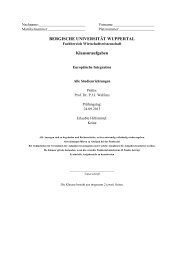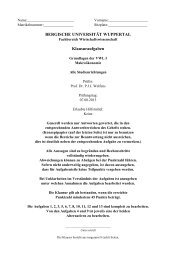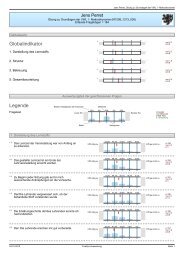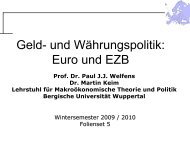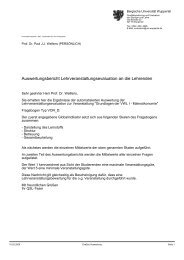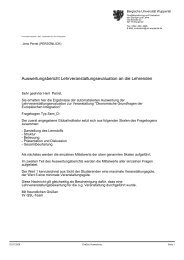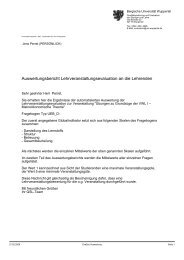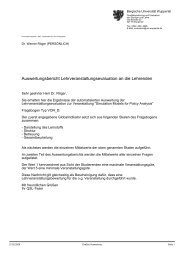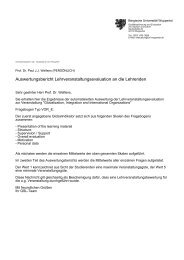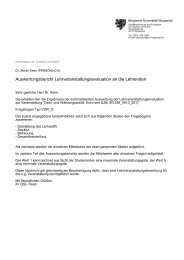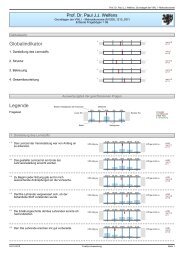UNIVERSITÄT POTSDAM - Prof. Dr. Paul JJ Welfens
UNIVERSITÄT POTSDAM - Prof. Dr. Paul JJ Welfens
UNIVERSITÄT POTSDAM - Prof. Dr. Paul JJ Welfens
Create successful ePaper yourself
Turn your PDF publications into a flip-book with our unique Google optimized e-Paper software.
structure capital were of equal size in the US and Euroland, the slower growth rate of<br />
gQ in the latter – mainly caused by low infrastructure expenditures in Germany, Belgium<br />
and Austria – would explain part of the transatlantic growth differential. Germany<br />
together with Belgium indeed recorded the lowest ratio of public investment to GDP in<br />
2000; this might be understandable in Belgium where government is facing the challenge<br />
to reduce a debt-GDP ratio of more than 100% in 2000, but for reunited Germany<br />
that is a real puzzle since its debt-GDP ratio stood at an uncritical 60%; additionally<br />
since economic catching-up of eastern Germany requires relatively high public investment<br />
one would expect Germany to have one of the highest public investment-GDP<br />
ratios among the members of Euroland.<br />
If we assume for the medium term that the number of skilled labor is exogenous<br />
– not a realistic presumption for the long run taking into account long-term opportunities<br />
for training and education – then the growth rate Y/H in the above equation is identical<br />
with the overall growth rate of output.<br />
3. Innovation, ICT Dynamics and Growth: Theoretical and Empirical Aspects<br />
3.1 Basic Theoretical Issues<br />
The positive impact of technological change and innovation on fostering economic<br />
growth is generally acknowledged. Although the growth enhancing effects of new<br />
products and processes had been known for some time, it took some decades to attract<br />
the interest of researchers to study technical change. This lack of interest may be explained<br />
in part by complex procedures ruling science and technology (S&T) and the<br />
unknown mechanisms translating innovations into broad-based economic effects.<br />
However, it is a matter of fact that technological change is a driving force behind economic<br />
growth.<br />
Thus, it is not surprising that recent approaches in growth theory pay much attention<br />
to technological change or its “mate”: human capital or knowledge. The basic<br />
models of the new growth theory which are in the meantime standard in modern textbooks<br />
are presented in ROMER (1986), LUCAS (1988) and ROMER (1990). A large<br />
part of new growth theory assumes a beneficial know-how “transfer” from a knowledge-generating<br />
sector which performs R&D to the sector of the economy in which<br />
companies simply adopt it. Part of this knowledge as a result of R&D efforts is paid for<br />
by the receiving firms while some part diffuses without appropriate compensation.<br />
Thus, external effects of knowledge creation (so called spillover effects) are followed<br />
27



